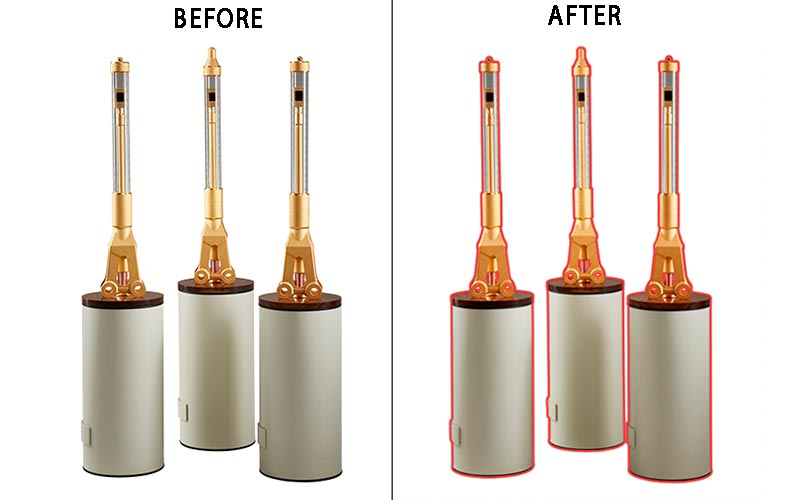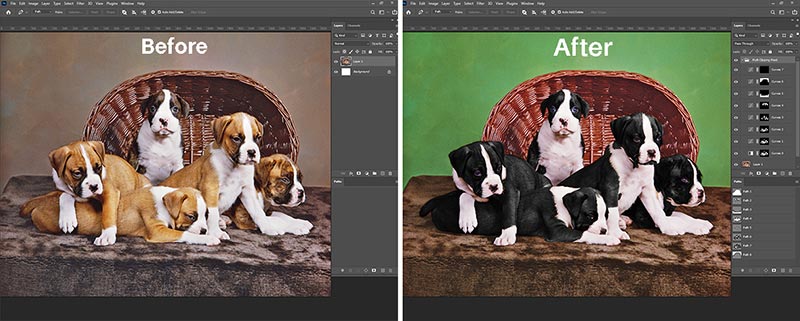Clipping Path
Price Start from $0.49 or €0.47
A clipping path is a graphic design technique used to isolate and extract a specific object or subject from an image. This process involves creating a precise vector path around the object, allowing it to be separated from the background and placed on a different backdrop or used in various design applications.

Clipping Path
A clipping path is a fundamental and versatile technique in the realm of graphic design and image editing. It plays a pivotal role in isolating objects or subjects within an image, offering unparalleled precision and control. This comprehensive discussion delves into the various aspects of clipping paths, exploring their applications, techniques, tools, and the impact they have on the world of design and photography.
Introduction to Clipping Paths: Definition: A clipping path is a closed vector path or shape used to outline and isolate an object or subject within an image. It is commonly employed in graphic design, image editing, and digital photography to remove the background or separate the desired element from the rest of the image. Basic Purpose: The primary goal of a clipping path is to create a distinct boundary around the subject so that it can be extracted and placed on a different background, manipulated, or enhanced without affecting the surrounding elements.
Applications of Clipping Paths: E-commerce: E-commerce platforms use clipping paths to showcase products with a clean, consistent background. This makes the products more visually appealing and helps potential customers make informed purchasing decisions. Advertising and Marketing: In advertising and marketing, clipping paths are employed to create eye-catching graphics, promotional materials, and advertisements that highlight products or services. Photo Retouching: Clipping paths are crucial in portrait and beauty retouching, allowing photographers and retouchers to enhance the subject while maintaining precise control over the background. Catalogs and Brochures: Clipping paths are extensively used in catalog and brochure design to isolate products, making them stand out against the backdrop and maintaining a uniform style throughout the publication. Fashion Industry: The fashion industry relies on clipping paths for cataloging clothing items and accessories, ensuring a clean and consistent look in various media. Photography Studio: Photographers employ clipping paths to remove or change backgrounds, creating thematic or stylized images with ease.
Techniques and Tools for Creating Clipping Paths: Manual Clipping Paths: Designers use software like Adobe Photoshop's Pen Tool to create precise clipping paths manually. This method offers complete control but can be time-consuming. Magic Wand Tool: This tool can select and separate areas of similar color and tone, but it may require manual adjustments for accuracy. Path from Selection: Many image editing software options provide a feature that converts selections into paths, simplifying the process. Automated Software: Some software solutions offer automatic or semi-automatic clipping path generation, which can be quick but may require additional refinement. Tablet and Stylus: Digital artists often use graphic tablets and stylus pens for more natural and detailed manual path creation. Vector Editing Software: Beyond Photoshop, vector-based software like Adobe Illustrator can also create and edit clipping paths, offering precision and scalability.
Clipping Path Variations: Basic Clipping Path: A basic clipping path outlines a subject with a simple shape, such as a rectangle or ellipse, making it easy to isolate. Compound Clipping Path: Compound paths are used when an image contains multiple objects that need individual treatment or when an object has internal transparency. Complex Clipping Path: For intricate and complex subjects with numerous curves, intricate details, and transparency, a complex clipping path is required. Multi-Path or Color Path: Multi-path clipping involves creating separate paths for various color correction or editing purposes within the same image.
Benefits of Clipping Paths: Precision: Clipping paths offer unparalleled precision when isolating objects from their background, ensuring clean, sharp edges. Flexibility: They provide the flexibility to change backgrounds, add effects, or manipulate isolated objects as needed. Consistency: Clipping paths help maintain a consistent and professional appearance in catalogs, websites, and marketing materials. Time Efficiency: With the right techniques and tools, clipping paths can be created efficiently, streamlining the image editing process.
Challenges and Common Issues: Complex Subjects: Objects with intricate details, intricate edges, or semi-transparent areas can pose challenges in creating precise clipping paths. Hair and Fur: Isolating subjects with fine details like hair or fur can be particularly challenging, requiring advanced techniques. Feathering and Soft Edges: Achieving soft edges and feathering can be difficult when working with hard-edged clipping paths. Quality Control: Ensuring the path accurately outlines the subject and doesn't cut off essential details is crucial.
The Future of Clipping Paths: Artificial Intelligence: AI-driven tools are emerging in image editing, which can automate and enhance the clipping path creation process. Simplified Workflows: Integration of clipping path tools within broader design and editing software is likely to simplify workflows. Expanded Applications: Clipping paths will continue to play a vital role in an ever-expanding digital landscape, from virtual reality to augmented reality. Realistic Compositing: Advancements in image compositing will demand more precise and realistic clipping paths to seamlessly integrate objects into various environments.
Conclusion: In conclusion, clipping paths are a fundamental and indispensable tool in graphic design, photography, and image editing. They offer the means to extract objects from images with remarkable precision and control, enabling various applications in e-commerce, advertising, photo retouching, and more. While challenges exist, the future of clipping paths is promising, with the advent of AI and continued integration into evolving digital workflows. As the demand for quality visuals in a digital world continues to grow, the role of clipping paths will remain pivotal in ensuring stunning and professional imagery.


